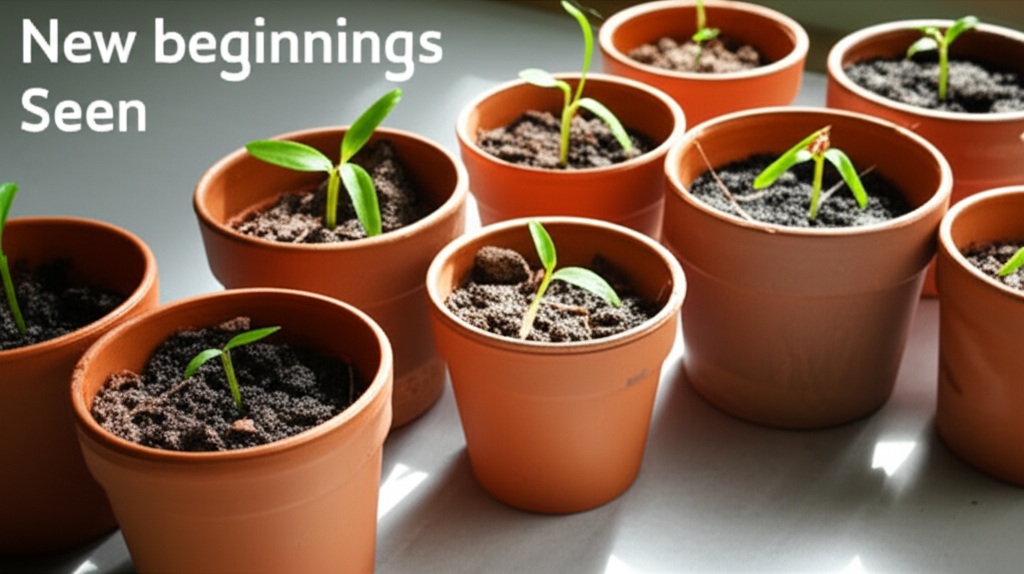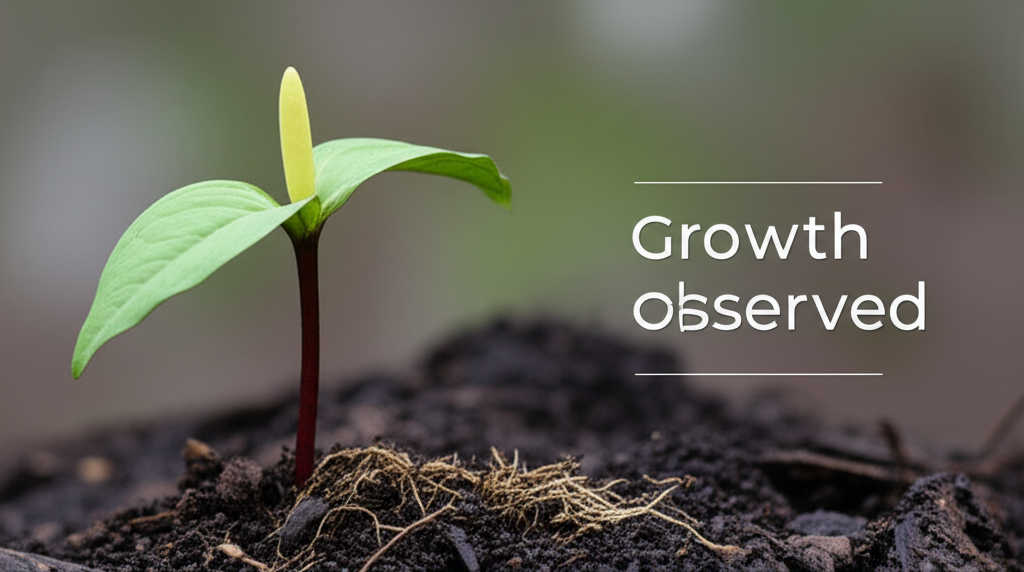Introduction: The Allure of the Jack-in-the-Pulpit
The Jack-in-the-Pulpit (Arisaema triphyllum) is a plant that sparks curiosity and admiration in equal measure. Its distinctive spathe, resembling a pulpit with a hooded lid, and the emergent spadix, the “Jack,” create a botanical marvel unlike any other. This woodland native, found in shaded, moist environments across eastern North America, is not only a captivating visual specimen but also a plant with a fascinating life cycle and ecological significance. Beyond its aesthetic appeal, the plant’s ability to reproduce and thrive in its natural habitat, and its potential for cultivation by enthusiasts, makes it a subject of ongoing interest. This article delves into the intricacies of Jack-in-the-Pulpit propagation, exploring various methods, the factors influencing success, and offering practical observations for gardeners aiming to replicate this woodland wonder.
Understanding Jack-in-the-Pulpit’s Life Cycle: The Foundation of Propagation

Successful propagation hinges on a thorough understanding of the plant’s natural life cycle. Jack-in-the-Pulpit exhibits a unique habit of sex change, with individual plants typically starting as male, transitioning to hermaphrodite, and eventually becoming female as they mature and gain resources. This flexibility in reproductive strategy is a key factor in its survival.
Seed Germination: A Patient Endeavor
Propagation from seed is the most natural method, but it requires significant patience. Jack-in-the-Pulpit seeds have a complex germination requirement, often involving a period of stratification (exposure to cold, moist conditions) and warm temperatures.
- Collection: Seeds are typically found in clusters of bright red berries in late summer or fall. These berries should be harvested when ripe and plump.
- Cleaning: The fleshy berry pulp must be removed, usually by rubbing the seeds gently in a sieve under running water.
- Stratification: For successful germination, seeds require both cold and warm stratification.
Cold Stratification: Seeds are mixed with a moist medium, such as sphagnum moss or vermiculite, and stored in a refrigerator (around 35-40°F or 1-4°C) for at least 90 days, and ideally up to 120 days.
Warm Stratification: After cold stratification, the seeds need a period of warmer temperatures (around 70°F or 21°C) to break dormancy further. This can be achieved by sowing them in pots and placing them in a warm location.
- Sowing: Seeds can be sown in well-draining potting mix in pots or directly in a prepared seedbed in a shaded, moist location. They should be sown about 1/4 inch deep.
- Germination Time: Germination can be erratic and may take anywhere from a few months to over a year. Some seeds may not germinate in the first season.
Vegetative Propagation: Corms and Offsets
Jack-in-the-Pulpit reproduces asexually through underground corms and offsets. This method offers a more immediate reward in terms of plant size compared to seed propagation.
- Corms: The primary reproductive structure is a corm, which is a swollen, underground stem. As the plant grows, it can produce smaller corms, or offsets, attached to the parent corm.
- Division: Mature corms can be carefully divided. This is best done during the plant’s dormant period, typically in late fall or early spring before new growth emerges.
Gently excavate the corms from the soil.
Carefully separate any offsets or smaller corms from the main corm. Ensure each division has at least one bud.
Allow the cut surfaces to air dry for a day or two to prevent rot.
Replant the divisions in suitable conditions.
Factors Influencing Propagation Success
Several key factors significantly influence the success rate of Jack-in-the-Pulpit propagation, whether from seed or vegetative material.
Environmental Conditions
Jack-in-the-Pulpit is a plant of the understory, and mimicking its natural habitat is crucial for successful growth and reproduction.
- Light: Partial to full shade is essential. Direct sunlight, especially during the hottest parts of the day, can scorch the leaves and stress the plant. Dappled light or shade under deciduous trees is ideal.
- Moisture: Consistent moisture is critical. The soil should be kept evenly moist but not waterlogged. Areas with rich, humusy soil that retains moisture are preferred.
- Soil Type: A well-draining, organically rich soil is paramount. Loamy soils with plenty of compost or leaf mold provide the necessary nutrients and aeration. Avoid heavy clay soils that can become waterlogged.
- Temperature: The plant thrives in temperate climates and requires distinct seasonal changes, including a cold dormancy period for seed germination and corm development.
Timing of Propagation
The timing of propagation activities can significantly impact success rates.
- Seed Sowing: Seeds are best sown in the fall after collection to allow for natural cold stratification throughout winter. Alternatively, if collected seeds are stored and artificially stratified, they can be sown in early spring.
- Corm Division: The dormant period, either late fall after the foliage has died back or early spring before new growth begins, is the optimal time for dividing corms. This minimizes stress on the plant.
Key Facts and Comparison of Propagation Methods
Understanding the nuances of each propagation method allows gardeners to choose the approach best suited to their resources and patience levels.
| Feature | Seed Propagation | Corm Division |
|---|---|---|
| Time to Maturity | 3-5 years or more | 1-2 years |
| Effort Required | High (stratification, long germination) | Moderate (excavation, division) |
| Number of Plants Produced | Potentially high (from a single seed) | Limited by the number of divisions |
| Genetic Diversity | High | Low (clones of parent) |
| Cost | Low (seeds are often free or inexpensive) | Moderate (cost of purchasing mature corms) |
| Best For | Creating a large population, preserving genetic diversity | Quickly establishing new plants, propagating desirable specimens |
Observational Insights into Propagation Success
Based on horticultural observations and experience, certain practices consistently lead to higher success rates.
Seed Propagation Observations
- Stratification is Non-Negotiable: Skipping or inadequately performing the stratification process is the most common reason for seed propagation failure. The dual cold-warm requirement is essential for breaking dormancy.
- Patience is a Virtue: Many gardeners become discouraged by slow germination. It is crucial to remember that Jack-in-the-Pulpit seeds are designed for long-term survival and can take multiple seasons to sprout.
- Moisture Management is Key: While seeds need moisture for germination, overly wet conditions can lead to fungal diseases and rot. A well-draining seed-starting mix and careful watering are vital.
- Seed Viability Varies: Not all collected seeds will be viable. Harvesting ripe berries and proper cleaning are important steps to maximize the chances of obtaining viable seeds.
Corm Division Observations
- Dormancy is Crucial: Attempting to divide corms while the plant is actively growing will likely damage the plant and result in poor establishment of the divisions.
- Gentle Handling: Corms and their delicate root systems can be easily damaged. Careful excavation and separation are essential.
- Adequate Rest: Allowing cut surfaces to dry before replanting helps prevent fungal infections and rot, which can be a significant problem for corms.
- Planting Depth Matters: Replanting corms at a similar depth to their original position, or slightly deeper, ensures they are adequately protected and can establish roots.
Step-by-Step Guide to Propagation Success
To consolidate the information, here is a practical guide with steps and a summary of pros and cons for each method.
| Method | Steps for Success | Pros | Cons |
|---|---|---|---|
| Seed Propagation |
|
|
|
| Corm Division |
|
|
|
Troubleshooting Common Propagation Issues
Even with careful attention, propagation can sometimes present challenges. Identifying and addressing these issues is key to achieving success.
- No Germination from Seeds: The most likely culprits are inadequate stratification, incorrect temperature fluctuations, or non-viable seeds. Re-evaluate the stratification process and ensure consistent moisture.
- Rotting Corms/Seeds: This is almost always due to overwatering or poor drainage. Ensure the soil is well-draining and avoid soggy conditions. Allow cut surfaces of corms to dry thoroughly.
- Weak or Stunted Seedlings: Insufficient light, poor soil nutrients, or inconsistent moisture can lead to weak seedlings. Ensure they are in appropriate shade, a rich soil, and receive regular watering.
- Failure of Divisions to Establish: This can occur if divisions are too small, lack a bud, were damaged during separation, or were planted too deep/shallow. Ensure divisions are robust and planted at the correct depth.
Conclusion: The Rewarding Journey of Cultivating Jack-in-the-Pulpit
Propagating Jack-in-the-Pulpit, whether through the patient journey of seed germination or the more immediate rewards of corm division, is a deeply satisfying horticultural endeavor. Understanding the plant’s specific needs, mimicking its natural woodland environment, and employing the correct propagation techniques are the cornerstones of success. By embracing the challenges and celebrating the unique life cycle of this captivating woodland native, gardeners can not only expand their own collections but also contribute to the preservation and appreciation of this botanical gem. The observant gardener, armed with knowledge and patience, will find the effort of cultivating Jack-in-the-Pulpit richly rewarded with its striking beauty and the ongoing cycle of life it represents.


